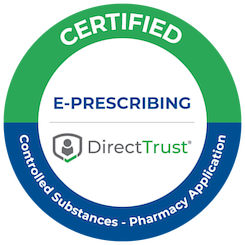How to Find the Best EMR for Your Facility
From acute care to long-term care, home care to hospice, electronic medical records (EMR) are no longer a choice, but a necessity. But for Long-Term Care and Post-Acute Care providers looking for a quality EMR solution, the challenge can be daunting. The investment in a new EMR is huge, and with the ever-evolving regulatory requirements and literally hundreds of EMR systems and vendors to choose from, it might be hard to know how—and where—to start.
What exactly IS an EMR?
A good place to begin is understanding the name itself. An EMR is defined as a digital version of a patient’s chart within a single healthcare organization or medical practice. The EMR record includes the medical history and other patient information recorded by clinicians and staff within that organization. Usually incorporating point of care documentation using web-based or cloud-based software on a mobile device, EMRs allow authorized users to create, manage, and extract patient data as necessary.
In the world of health information technology (HIT) the term “EMR” is sometimes used interchangeably with “EHR” (electronic health record). There is a difference, however. EHR systems conform to nationally recognized interoperability standards and include patient records from across the healthcare continuum: physician’s offices and pharmacies, hospitals and laboratories, long term and post-acute care (LTPAC) settings.
What defines a quality EMR solution?
Interoperability is one of the most crucial features of an EMR system. HIMSS (Healthcare Information and Management Systems Society) defines interoperability as the ability of different HIT systems to connect within and across organizational boundaries in order to cooperatively exchange and utilize data. Interoperability relates to the transfer of information or data from one healthcare provider or organization to another. An EMR system with limited and/or ineffective interoperability is not an EMR solution, because it does not enable a patient’s electronic medical record to become part of their broader EHR.
This is where OmegaCare stands out. Interoperability is especially important because LTPAC patients are much more likely to have chronic conditions and comorbidities that necessitate frequent transition between multiple care providers. Most EMR systems tout their interoperability capabilities, but in reality, seamless interoperability among EMR vendor systems is rare.
Interoperability is at the top of the list, but there are a lot of features and capabilities that are crucial in a quality EMR system and vendor. Look for:
- Interface Capabilities: Will the EMR integrate easily with other software solutions at your agency?
- Regulatory Compliance: Will it help your agency meet all current and upcoming regulatory requirements?
- Efficiency and Effectiveness: Can the system help streamline agency processes and procedures? Can it save time for clinicians and/or agency staff?
- Cost Controls: Does it offer, for example, automated mileage tracking for increased accuracy and proven cost savings?
- Customization: Can it be customized to your agency’s individual requirements?
- Report Capabilities: Does it allow the data to be easily accessed in reports for episodic, operational and business analysis?
- System Help: Does it offer embedded help text to aid clinicians in the field?
- Vendor Support: Does the EMR vendor offer ongoing service and support?
What do other providers have to say?
You shouldn’t rely solely on the word of an EMR vendor in your search for a quality EMR solution.
Your state home health or hospice association may be able to provide information on what systems are being used in your area and direct you to colleagues who are willing to discuss their EMR software systems with you. But don’t just ask what system a colleague is using. Instead find out why they are using that system, what they like and don’t like about it. Ask:
- What do you like about your EMR, and what do the system users (clinicians) think about it?
- Is your EMR vendor responsive to your changing needs?
- Does your vendor offer ongoing system support and training?
- Has the system improved agency efficiency?
- Do you consider your EMR a quality solution?
- What needs are not being met by your EMR system?
- How and why did you select your EMR vendor?
- Did you consider any other vendors before you made your final decision?

Online Research: User Reviews
In addition to talking with other agency providers, you should head online to find out more about what others have to say. You’ll find that reviews differ from site to site.
Making Your Decision
Once you have a list of qualified vendors that could meet your needs, it’s time to narrow it down. When evaluating the final candidates, you’ll want to review all of the considerations discussed above (“What defines a quality EMR system?”).
At this stage, the vendors’ own websites will be a valuable tool, as well. Look around the sites yourself, but also make sure each vendor you’re considering shows you what content is available exclusively to their provider customers. Look for:
- Ongoing training resources: system training curricula and materials, implementation and training videos, blended learning materials
- Online manuals for implementation, ongoing operation, system administration, and system customization
- Regular online educational resources on industry developments, advancements, and regulations
- Release notes on system updates
- Printable reference forms for clinicians/users: FAQs, system functions and functionality, agency notes, troubleshooting
A Final Word
Perhaps the most important thing to consider when selecting your EMR solution is the vendor’s reputation for customer service. No system has every bell and whistle, and some bells and whistles you won’t even use once the system is installed. But the investment in a new EMR is huge, and you want to be sure the vendor you choose has a service and support philosophy that matches your own.
As the industry and technology continue to change, you want to be comfortable that the vendor you choose will be with you and supportive every step of the way…until a return on your EMR investment has been achieved, and beyond.




